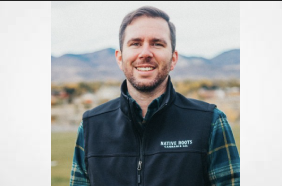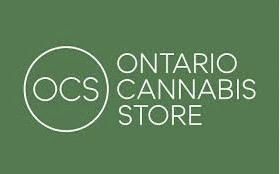Authors: Michael H. Sampson George L. Stewart
In each of the endorsements, “[c]annabis” is defined to mean “[a]ny good or product that consists of or contains any amount of Tetrahydrocannabinol (THC) or any other cannabinoid, regardless of whether any such THC or cannabinoid is natural or synthetic.” Notably, “cannabis” is further defined to include “[a]ny compound, byproduct, extract, derivative, mixture or combination, such as … [h]ash or hemp” that contains “THC or any other cannabinoid ….” Paradoxically, “hemp” is not defined in any of the endorsements. This omission, coupled with the sweeping definition of “cannabis,” renders the endorsements unclear, if not internally inconsistent and/or misleading. As such, the scope and effect of the exclusions and the exceptions are far from clear. This lack of clarity could be exploited to negate much of the effect and import of these critical exceptions.
Background
The five new cannabis-related BOP endorsements that ISO recently rolled out can be split into two sets. The first set relates to property coverage and includes: (i) “Cannabis Property Exclusion,” BP 15 30 09 19; and (ii) “Cannabis Property Exclusion with Hemp Exception,” BP 15 31 09 19. The second set relates to liability coverage and includes (i) “Cannabis Liability Exclusion,” BP 15 32 09 19; (ii) “Cannabis Liability Exclusion with Hemp Exception,” BP 15 33 09 19; and (iii) “Cannabis Liability Exclusion with Hemp and Lessors Risk Exceptions,” BP 15 34 09 19.
The “hemp exceptions”
For each set of endorsements, all of which are intended to modify the “Businessowners Coverage Form,” there is a base form that contains the relevant cannabis exclusion without any exception for hemp (i.e., BP 15 30 09 19 and BP 15 32 09 19). In each set, there is also one or more version(s) of the same endorsement that contains, inter alia, an exception to the exclusion that purports to carve back coverage for losses or claims involving hemp (i.e., BP 15 31 09 19, BP 15 33 09 19, and BP 15 34 09 19).
For example, the “Cannabis Property Exclusion with Hemp Exception” endorsement (BP 15 31 09 19) provides that the relevant cannabis exclusion, with limited exception, “does not apply to … goods or products containing or derived from hemp, including but not limited to: a. Seeds; b. Food; c. Clothing; d. Lotions, oils or extracts; e. Building materials; or f. Paper.”
Similarly, the hemp exceptions within the two liability-related endorsements (BP 15 33 09 19 and BP 15 34 09 19) each provide, in relevant part and with limited exception:
“The [aforementioned cannabis-related] exclusion … does not apply to:
- ‘Bodily injury’, ‘property damage’ or ‘personal and advertising injury’ arising out of goods or products containing or derived from hemp, including, but not limited to:
a. Seeds;b. Food;
c. Clothing;
d. Lotions, oils or extracts;
e. Building materials; or
f. Paper.
- ‘Property damage’ to goods or products described in [paragraph 1].”
Warning
Despite the expressed intent to carve-out “hemp” (certain of these endorsements go so as far as to reference the so-called “hemp exception” in their titles), the broad definition of “cannabis” set forth in those endorsements calls into question the practical effect and import of the “hemp” exceptions.
Each of the ISO BOP endorsements defines “cannabis” to mean “[a]ny good or product that consists of or contains any amount of Tetrahydrocannabinol (THC) ….” Each of them further defines “cannabis” to also include “any good or product that consists of … any other cannabinoid.” Each of the endorsements further provides that the definition of “cannabis” “includes, but is not limited to, any of the following containing such THC or cannabinoid: a. [a]ny plant of the genus Cannabis L. …; or b. [a]ny compound, byproduct, extract, derivative, mixture or combination, such as … “[h]ash or hemp ….” Although not defined in any of the endorsements, “hemp,” as the term is commonly used, implicitly, if not explicitly, fits within this definition – thereby causing tension between the exclusionary language (which is predicated on the term “cannabis” that is defined to include “hemp”) and the exception (which is predicated on the undefined term “hemp”).
In the U.S. Agriculture Improvement Act of 2018 (often referred to as the “2018 Farm Bill”), which declassified “hemp” as a schedule I controlled substance under the U.S. Controlled Substances Act and/or its regulations, “hemp” is defined to mean “the plant Cannabis sativa L. and any part of that plant, including the seeds thereof and all derivatives, extracts, cannabinoids, isomers, acids, salts, and salts of isomers, whether growing or not, with a delta-9 tetrahydrocannabinol concentration of not more than 0.3 percent on a dry weight basis.” In other words, “hemp” means a plant of the genus Cannabis L and may contain THC. Thus, a substance that qualifies as “hemp” under U.S. law could nevertheless satisfy the definition of “cannabis” in the ISO endorsements, which would render the exception to the exclusion potentially meaningless – or, at least, potentially ambiguous – in many situations.
Further, according to the National Cancer Institute, “[c]annabinoids, also known as phytocannabinoids, are chemicals in Cannabis that cause drug-like effects in the body, including the central nervous system and the immune system.” Cannabidiol (CBD) is a cannabinoid that is found in hemp. As such, the endorsements’ sweeping definition of “cannabis,” if read literally, would seem to include hemp-derived CBD products, again calling into question the scope and effect of the exceptions.
When purchasing an insurance policy that purports to provide coverage for “hemp” (by an exception to an exclusion or otherwise), policyholders understandably would expect to have coverage for claims or losses involving hemp, as that term is commonly used in the cannabis industry. It is far from clear whether these endorsements, as currently worded, would meet policyholders’ reasonable expectations.
Policyholders considering these endorsements should review them diligently, tread carefully, and consult with insurance-coverage counsel to make sure they are getting the coverage they actually seek. Reed Smith’s Insurance Recovery Group attorneys have drafted language that cures this problem and can be endorsed onto a BOP.

















